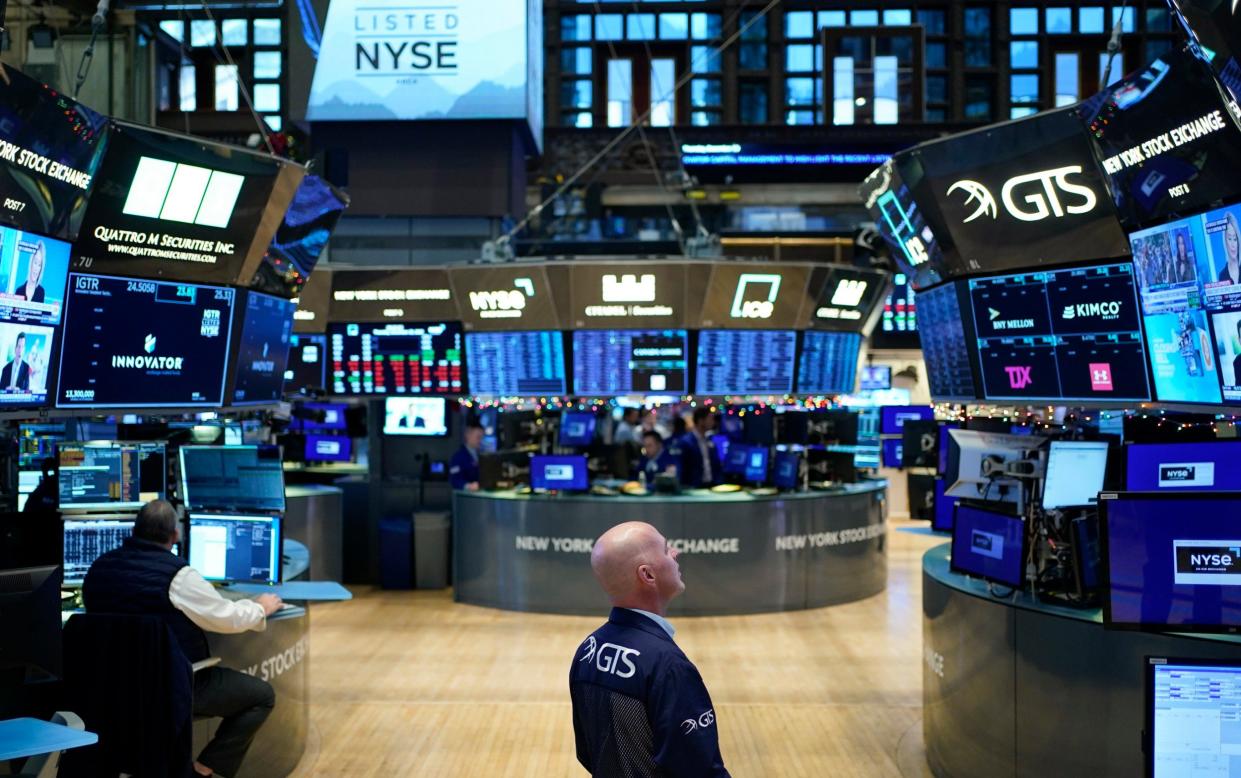Magnificent Seven stocks are soaring – but history suggests it won’t end well

Seven stocks – Alphabet, Amazon, Apple, Meta, Microsoft, Nvidia and Tesla – accounted for roughly 60pc of the US stock market’s 26.3pc return in 2023.
While the so-called Magnificent Seven rose by 107pc in 2023, the other 493 companies in the S&P500 index only gained 12.5pc for the year.
Amongst the most spectacular was Nvidia which has risen by 73.6pc so far in 2024, on the back of a 239pc gain in 2023. Together these companies are worth $9.83 trillion (£7.7 trillion), accounting for 22.2pc of the US stock market and have a market value bigger than the UK, France, Germany, and Italy combined.
Fearful of missing out on these gains, investors are pouring money into tech funds this year. According to data from Goldman Sachs, US Technology ETFs have taken in $5.6bn in the two months of the year.
But this is not the first time investors have become obsessed with a group of companies with a snappy name. So, what lessons might we learn from what became of the favoured companies of the past?
The dramatic fall of the Nifty Fifty: lessons from the 1970s
In the late 1960s and early 1970s, the market darlings were known as “The Nifty Fifty”. These were a group of high-quality stocks including Xerox, IBM, Polaroid and Coca-Cola. Most of these stocks were leaders in their industry, with strong balance sheets, high profitability, proven high growth rates and continual increases in dividends. Sounds familiar?
These are the very characteristics that are in vogue today in America. With the aforementioned characteristics, the Nifty companies were considered so appealing that they were called “one-decision” stocks – that is, their stocks should always be bought and never sold, irrespective of price.
The enthusiasm for these companies saw them become more expensive relative to the market such that in late 1972, the average Nifty Fifty stock price traded at a trailing multiple of 47 times earnings, which was 2.5 times that of the wider US market.
When the US stock market rolled over in 1973, however, the Nifty Fifty did dramatically worse than the average US stock. Whereas the S&P500 fell by 37pc to the 1974 trough, the Nifty Fifty basket fell by an additional 11pc.
Moreover, while the market recovered to the prior highs over the following three years, the Nifty Fifty were still 30pc below peak levels. In fact, these stocks never regained their 1973 highs through the course of the decade.

The ‘dotcom’ crash: lessons from 2000
In the late Nineties, many investors were swept away by the potential growth of the internet and bid up the share prices of telecoms, media and technology stocks in a frenzy that would eventually become known as the dotcom bubble.
Just as today, investors poured money into US technology funds – the poster child of which was US asset manager, Janus, – whose assets rose from $1bn at the start of the decade to over $300bn by 2000. During the 2000-02 bear market, however, the Janus Twenty Fund plunged 69pc whilst the Enterprise Fund plummeted 78pc, and Global Technology Fund lost 84pc.
The fact that investors were convinced that these high rates of growth would be sustainable was exemplified in a Fortune Magazine article headlined “Ten Stocks to Last the Decade” which was based on their prediction of major trends that would shape the next 10 years.
Just as with the Nifty Fifty, when the bubble burst these stocks fared much worse than average. The table below shows the performance of them at the end of 2012. An equally weighted portfolio of these companies would have lost 64pc during this period while the S&P500 gained 23pc over the same time.

There are two lessons that investors should draw from the Nifty Fifty’s bubble in the early 1970s and the technology bubble of the early 2000s.
Firstly, the future is usually far less certain than you might think and secondly, even a great company can become a poor investment if you overpay for it.
Recommended
Why do US stocks do better than British ones? Because we gave up on capitalism
Ian Lance is co-head of the UK value and income team at Redwheel, and co-fund manager of Temple Bar Investment Trust

